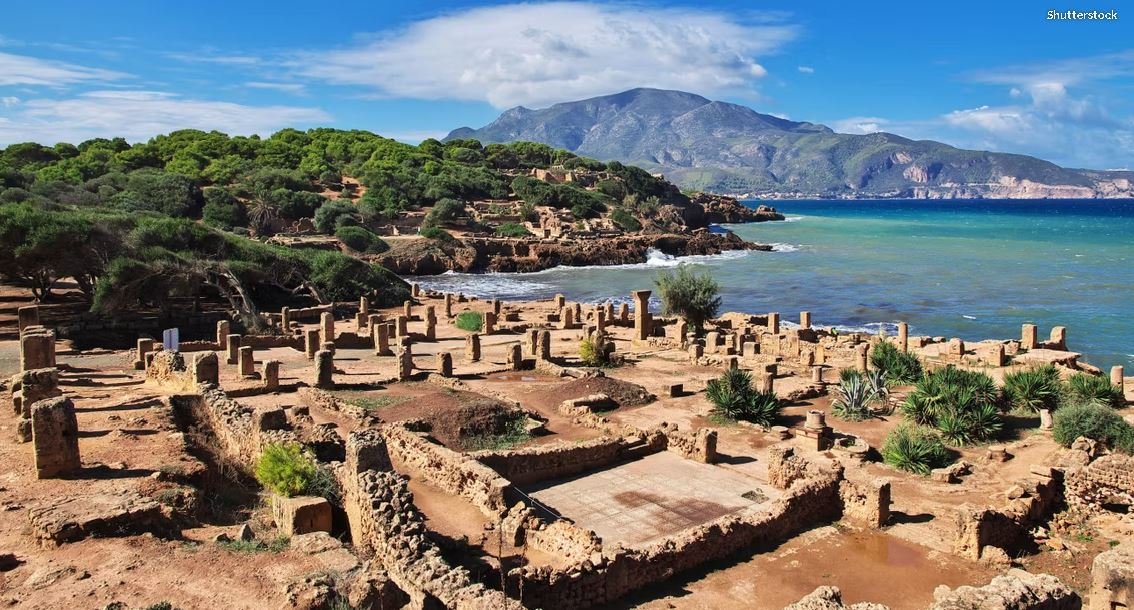SUMMARY
- North Africa has a rich history of colonization, with Phoenicia and Carthage dominating the region. Tipasa, in modern-day Algeria, is an important ancient trading post to explore.
- Tipasa started as a small Phoenician trading post and later became a strategic base for the Romans. It grew into a Roman colonia with a peak population of around 20,000.
- Today, the ruins of Tipasa include Phoenician, Roman, paleochristian, and Byzantine structures. Visitors can explore Punic necropolises, the Great Royal Mausoleum, Roman baths, basilicas, an ancient amphitheater, and an ancient harbor.
North Africa was colonized by ancient Phoenicia and then dominated by the former Phoenician colony of Carthage. The Romans rose to control all of North Africa and now there are plenty of excellent Punic-Roman sites to explore across the region. One of the forgotten ancient Punic trading posts-come-Roman-colonies to discover is the once-important city of Tipasa.
Tipasa is located in modern-day Algeria and is one of the best peeks into the deep history of the region. Other excellent ancient sites in Algeria include the abandoned Roman city of Timgad and remote forgotten Roman baths still used by the locals much as they were thousands of years ago. Start your adventure in Algeria with Tipasa.
The Impressive History Of Tipasa
Tipasa started out with humble origins, it was founded as a small Punic (Phoenician) trading post on the Algerian coast. Later it became a strategic base for the Romans as they conquered the North African kingdoms of Mauritania.
After the Romans took over Tipasa, they established it as a military colonia in the Roman province of Mauretania Caesariensis during the reign of Emperor Claudius. Roman colonies were cities that the Romans moved their own citizens into as a form of garrison to help secure provinces, later the term became associated with the highest-status cities in the empire.
- Period: 6th Century BC to 6th-7th Century AD
- Peak Population: Perhaps 20,000
The Roman colonia of Tipasa grew into a city (called Colonia Aelia Augusta Tipasensium) and reached a peak population of around 20,000 inhabitants in the fourth century. It was located only around 13 miles or 20 kilometers from the city of Caesarea, the provincial capital of the Roman province of Mauretania Caesariensis.
The walls ran for around 7,500 feet or 2,300 meters around the city and were mostly intended to defend the city from nomadic tribes.
While the defenses of Tipasa enabled the city to withstand an assault by a Berber rebellion in 372 AD (during which nearby Caesarea fell), it fell to the Vandals in around 429 AD. This marked the end of the prosperity of the ancient city.
Under the Vandal rule and their persecution of Catholics in 484 AD many of its inhabitants fled to Spain and the city declined but continued.
Tipasa had an epilogue of revival when the Eastern Romans (or Byzantines) retook the city in 531 AD and ousted the Vandals. But this didn’t last and the city was reduced to ruins after it was destroyed by the Arabs in the 7th century.
The Surviving Ancient Ruins Of Tipasa Today
Today the site is noted for its unique group of Phoenician, Roman, paleochristian, and Byzantine ruins. Additionally, there are indigenous monuments around the site including the great royal mausoleum of Mauretania.
Notable Ruins:
- Punic Necropolises
- Great Royal Mausoleum Of Mauretania
- Roman Baths
- Three Basilicas
- Ancient Amphitheater
- Ancient Theater
- Ancient Harbor
The ancient Phoenician necropolises of the area are some of the oldest of the Punic world (6th to 2nd centuries BC).
Little or no traces of the ancient Roman dwellings at Tipasa remain today, but the city’s ruins do include a number of monumental structures. See the remains of three churches, cemeteries, Roman baths, the nymphaeum, and the ancient amphitheater. The old ramparts of the city can still be made out while the remains of the old harbor are still visible at the foot of the hill.
- One of the great Punic harbors to discover is the remains of the Cothon, the harbor of Carthage.
The three churches are the Basilica of St Salsa (which still contains a mosaic) located on the eastern hill and the Basilica Alexander and the Great Basilica on the western hill. These basilicas are surrounded by cemeteries containing coffins made out of stone covered with ancient mosaics.
The churches are a reminder of when Tipasa was an important center of Christianity in the Roman Empire.
Visiting The Archeological Site Of Tipasa Today
Tipasa is located around 70 kilometers or 40 miles west of the modern capital city of Algiers. The ancient site is protected by three modern archeological sites; two archeological parks covering parts of the old city and the Royal Mauritanian Mausoleum. Tour guides are available at the main entrance to the site.
- Location: 70 km or 40 miles West Of Algiers
- Opening Hours: 9:00 am to 5:00 pm
The value of the ancient site of Tipasa has been long noted and it has been UNESCO World Heritage Listed since 1982. Unfortunately, much of the ancient city is now located underneath the modern city on the site.









